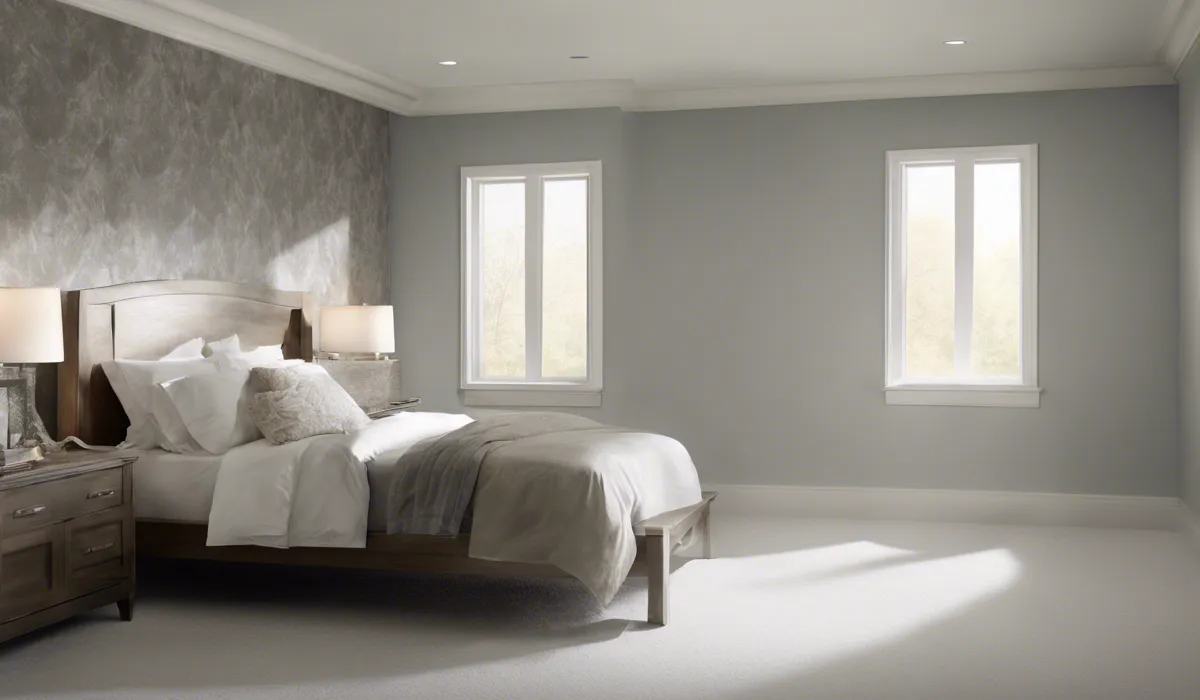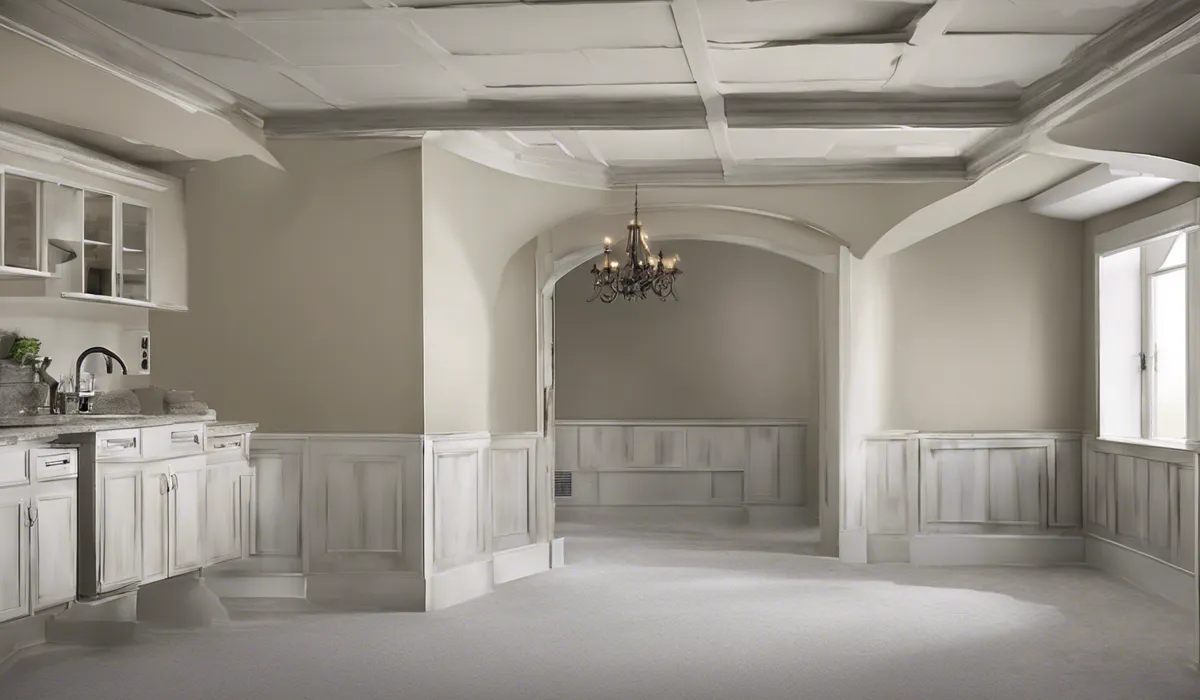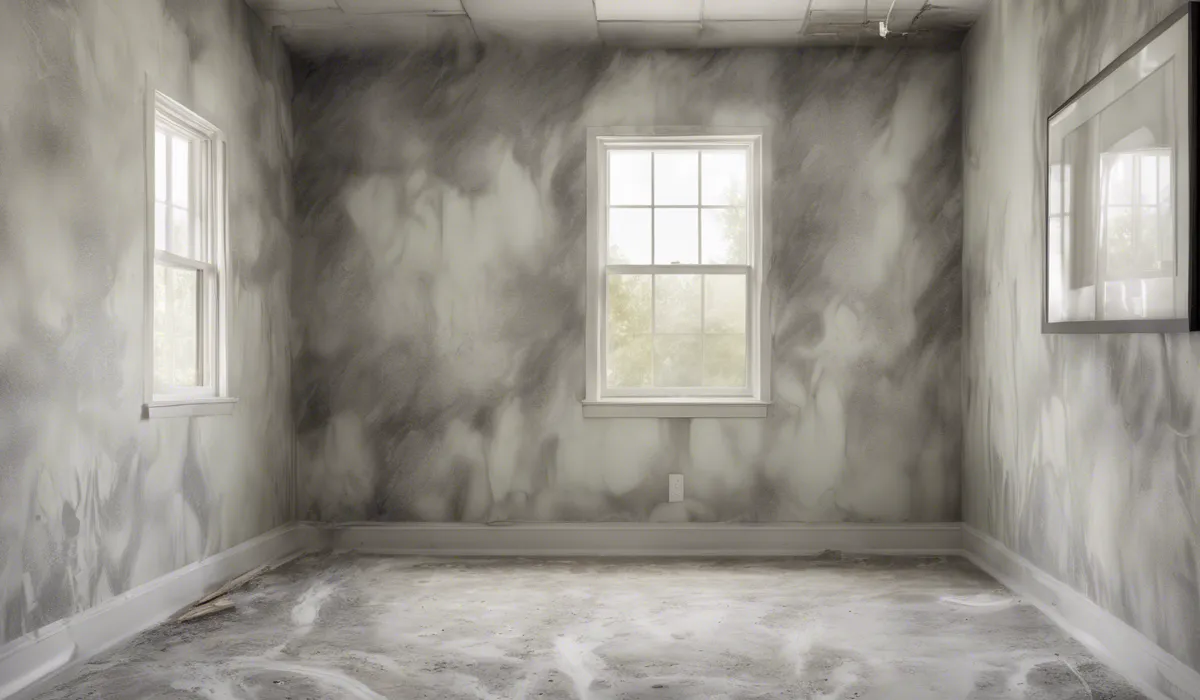Mold resistant drywall is a type of building material treated to prevent mold growth. It’s typically used in moist areas, such as bathrooms and basements. This drywall contains fiberglass, making it less porous and more water-resistant than regular drywall.
Understanding Mold Resistant Drywall

Definition and Composition
Mold resistant drywall is an advanced building material designed to withstand exposure to moisture and prevent the growth of mold.
This type of drywall is typically composed of a gypsum core that is covered in fiberglass, rather than the traditional paper lining.
The fiberglass surface is less hospitable to mold because it is non-organic, meaning mold has a harder time taking hold and proliferating. The core often contains antifungal agents that further inhibit mold growth.
Comparison with Regular Drywall
Regular drywall, also known as plasterboard or gypsum board, is made with a gypsum core and paper facing.
Mold resistant drywall differs as it replaces the paper with fiberglass, which provides a more water-resistant surface.
This small change significantly reduces the risk of mold growth, as mold feeds on organic materials like the paper used in traditional drywall.
Mold Resistance in Building Materials
Incorporating mold resistance into construction materials is crucial for the structural integrity of buildings and the health of their occupants.
Mold can cause significant damage to building materials, leading to costly repairs. Furthermore, exposure to mold can pose health risks, particularly for individuals with allergies or respiratory conditions.
Using mold resistant drywall is a proactive step in constructing safer and more durable environments.
Benefits of Using Mold Resistant Drywall

Prevention of Mold Growth
By using mold resistant drywall in construction, one of the key benefits is the significant reduction in the potential for mold growth.
This is crucial because mold can lead to a variety of health problems, such as asthma attacks, allergic reactions, and other respiratory issues.
By preventing the growth of mold, we contribute to creating a healthier living and working environment.
Durability and Longevity
Mold resistant drywall is more durable than its traditional counterpart, especially in areas prone to moisture.
This increased durability means that the walls of your home or office are less likely to incur damage from mold, leading to a longer lifespan for your building’s interior and less frequent need for repairs or replacements.
Long-term Cost-Effectiveness
While the initial cost of mold resistant drywall might be higher than regular drywall, it proves to be more cost-effective in the long run.
The reduced need for maintenance and the avoidance of mold removal expenses save money over time.
Furthermore, the longevity of mold resistant drywall can defer the costs associated with renovations.
Applicability in High-Moisture Areas
This type of drywall is specifically designed for use in high-moisture areas of a home or building, such as bathrooms, kitchens, basements, and laundry rooms.
It provides the extra protection needed in these environments, where traditional drywall might quickly become compromised due to humidity and condensation.
Installation and Maintenance of Mold Resistant Drywall

Installation Best Practices
When installing mold resistant drywall, it is essential to follow best practices to maximize its effectiveness. This includes ensuring that the structure is adequately ventilated to reduce moisture accumulation.
Using appropriate fasteners and sealants that are also resistant to moisture can help maintain the integrity of the drywall.
Finally, making sure that the drywall is properly sealed at the joints and edges will prevent moisture from seeping in.
Maximizing Effectiveness Against Mold
To ensure that mold resistant drywall performs at its best, it is crucial to control the indoor humidity levels.
Using dehumidifiers and maintaining proper ventilation can help keep moisture levels in check.
Additionally, promptly addressing any water leaks or spills will prevent moisture from being absorbed into the drywall.
Maintenance and Cleaning
Mold resistant drywall requires minimal maintenance, but regular inspections can catch potential issues early.
If cleaning is necessary, it is important to use gentle, non-abrasive methods and cleaners that will not compromise the mold-resistant properties of the drywall. Avoid using excessive water or steam, which can introduce additional moisture.
When to Use in Construction and Renovation?
Considering the use of mold resistant drywall is wise for both new construction projects and renovations, especially in areas with known moisture concerns.
It is also an excellent option for buildings in humid climates or for rooms that are frequently exposed to water, such as a bathroom or kitchen.
When renovating, replacing old, mold-prone drywall with mold resistant alternatives can substantially increase the structure’s resilience to mold.
FAQs About Mold Resistant Drywall
What is mold resistant drywall made of?
Mold resistant drywall is made of gypsum treated with mold inhibitors and faced with fiberglass, which makes it less porous compared to regular drywall.
Where is mold resistant drywall typically used?
It is typically used in moist areas of a home or building, such as bathrooms, basements, and laundry rooms, where the risk of mold growth is higher.
Is mold resistant drywall completely waterproof?
No, mold resistant drywall is more water-resistant than regular drywall but not completely waterproof; prolonged exposure to water may still cause damage.
Can mold resistant drywall be used as a tile backer in showers?
While mold resistant drywall is better suited for moist environments than regular drywall, it is not recommended for use as a tile backer in showers; a waterproof backer board is usually preferred.
How does mold resistant drywall contribute to indoor air quality?
Mold resistant drywall helps maintain indoor air quality by preventing mold growth, which can cause health problems and affect air quality.
Final Thoughts
Mold resistant drywall is a specialized building material designed to combat mold growth, especially in high-moisture environments like bathrooms and basements.
Its composition includes fiberglass, which reduces porosity and enhances the material’s resistance to water, thereby mitigating mold proliferation compared to standard drywall.
